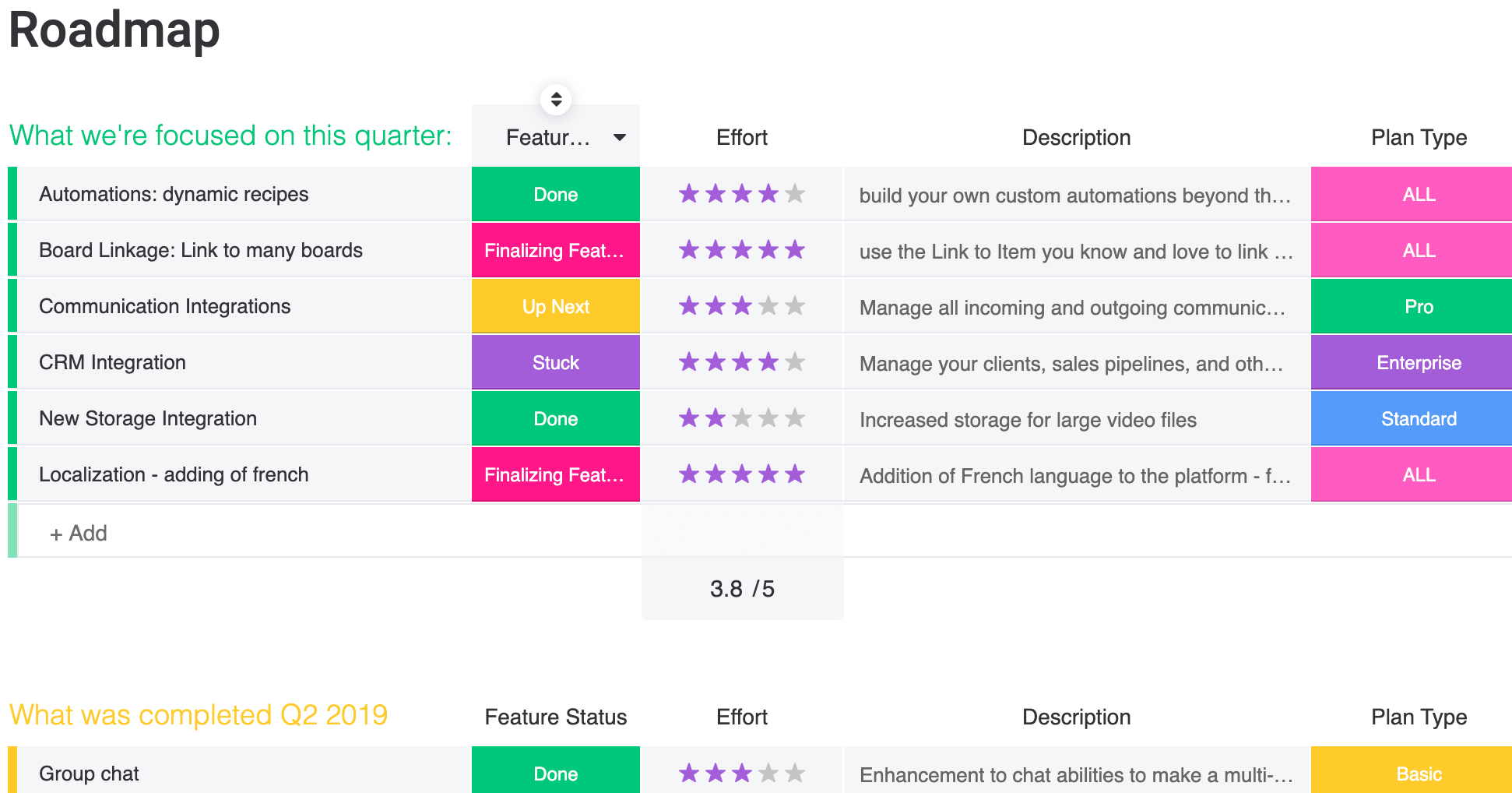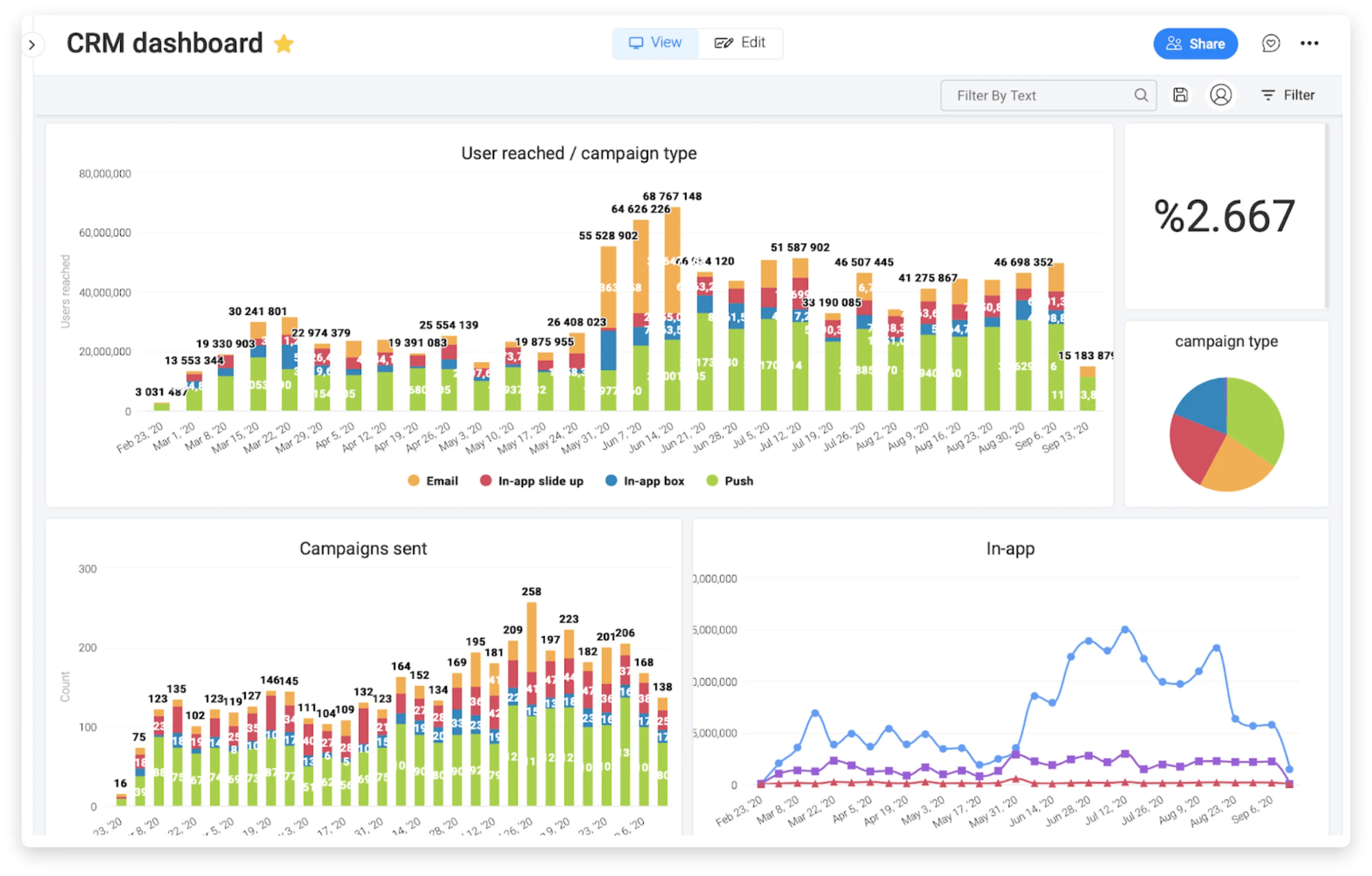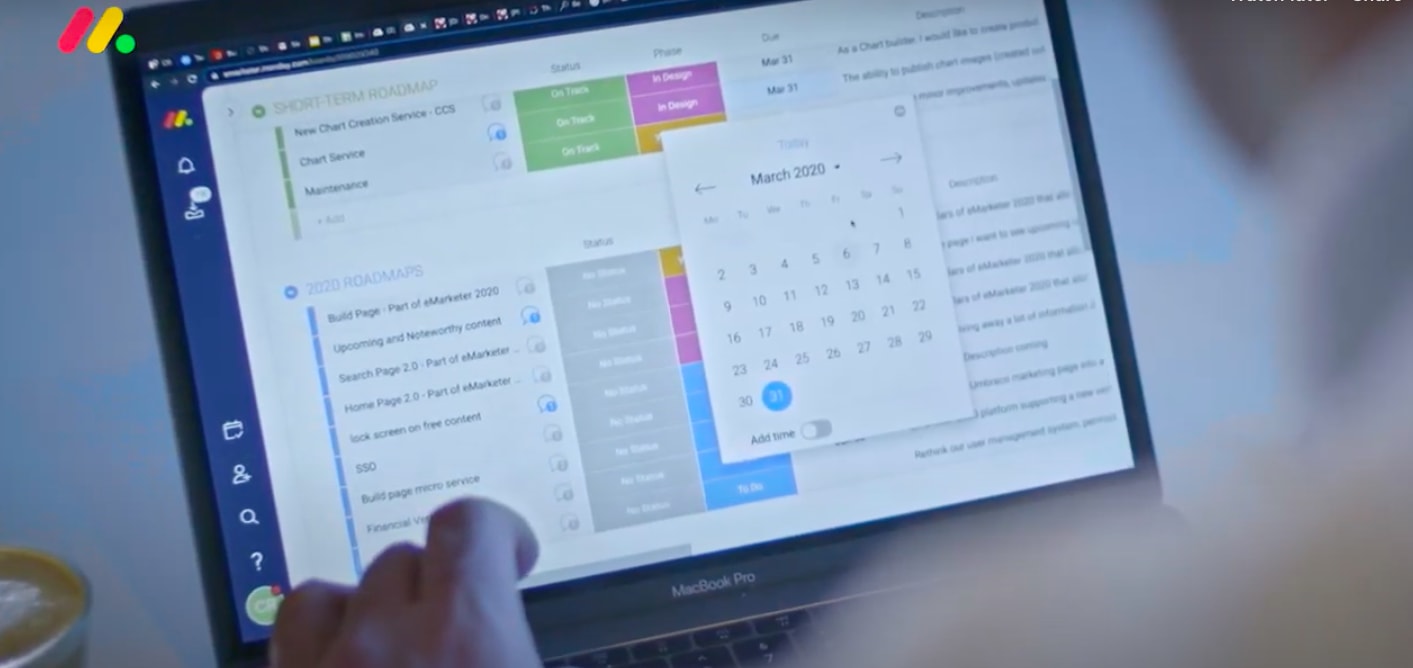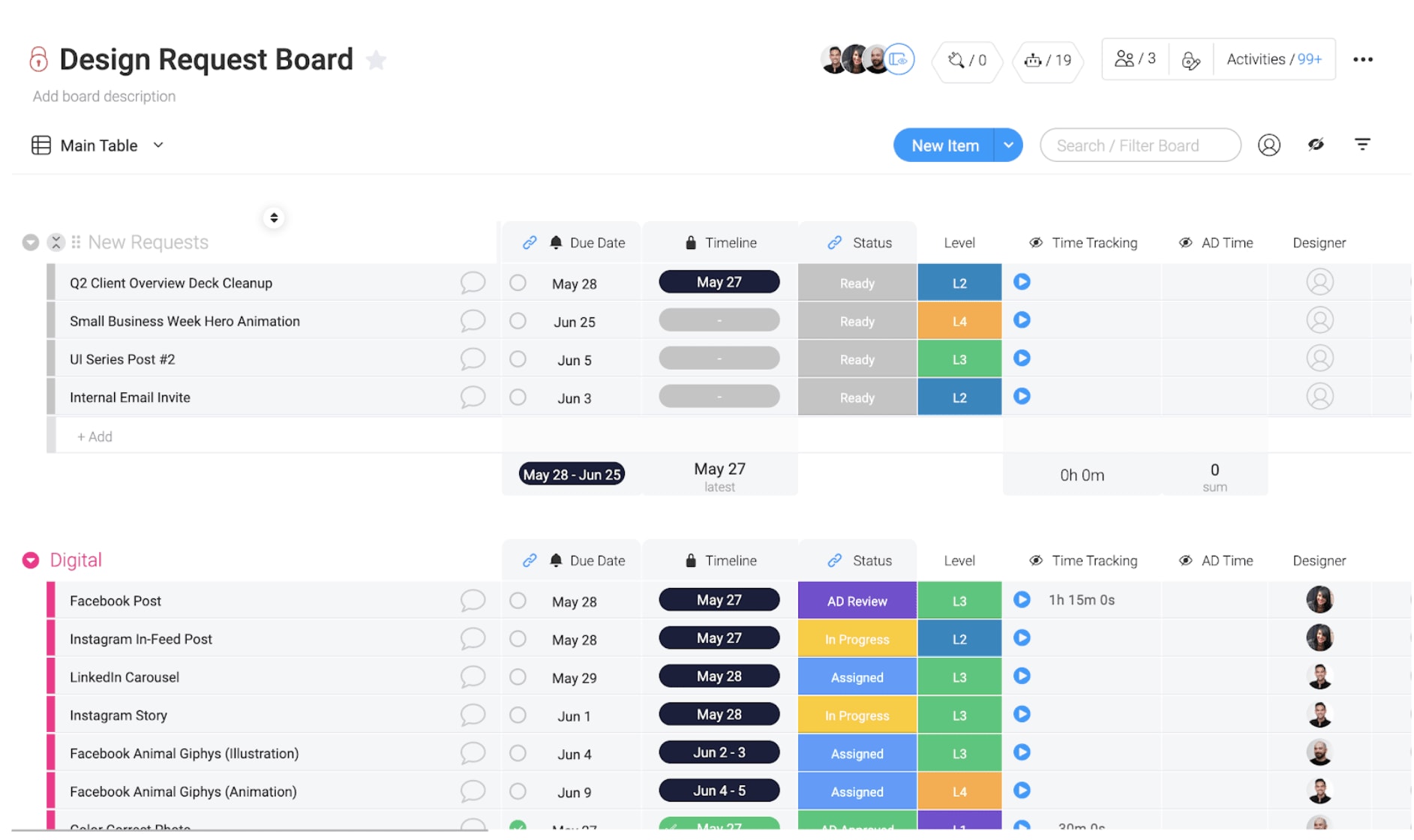Teamwork makes the dream work, as the cliche goes.
If you want your projects to succeed, you need a killer team. Projects are 30% more likely to succeed if they have the right people.
But how do you make sure you have the right people?
And how do you keep those people engaged?
After all, building an incredible team won’t get you very far if team members’ interest wanes over time, or if their engagement takes a nosedive at the first sign of trouble.
Here’s your complete guide to building a top-notch team and keeping them engaged to drive business growth in 2021.
Why is it important to have a strong team?
Simply put, the stronger your team, the more likely your projects are to succeed.
Now, that’s pretty damn simplistic, so let’s back it up.
As a recent PMI report notes “Success is greater when teams listen, learn, and are adaptable.”
Teams with engaged team members have 17% higher productivity, 21% higher profits, and 41% lower absenteeism.
But what are the hallmarks of a strong project team?
Employees who work well together as a team communicate more effectively, resolve conflicts better, share skills, foster creativity, and nurture productivity.
The problem is that when teamwork is lacking, these positive behaviors fall away.
When you consider that 29% of organizations admit that poor communication is the main reason their projects fail, you can see why it’s vital to foster a collaborative team.
This is more pressing than ever given the move toward remote working.
In fact, while 98% of workers say they’d like to work remotely some or all of the time, 20% note that team collaboration is a real struggle when working from home.
This means it’s more crucial than ever that teams find effective methods for team collaboration that traverse physical locations.
A real-world example — How O2 Telefonica strengthened its team
O2 Telefonica loyalty team, Priority, knows first-hand the sour impact of poor team collaboration.
“We deal with very short lead times. My team and I are on the front line, delivering hundreds of campaigns seen by millions of customers. But it hasn’t always been easy.
The tools and the processes that we were using allow for human error. Before we discovered monday.com, we were using whiteboards. We were simply writing things out. […] We struggled to be accurate, and it made for a really stressful environment.
Because everyone was working in isolation, there was an instance where we caused a nationwide negative experience for our customers. This caused a huge amount of frustration and as a result, there was a considerable social backlash which had a negative impact on our brand reputation and our trust.”
Seeking to prevent this from ever happening again, 02 and Priority vowed to find a solution that enabled seamless team collaboration and foolproof visibility.

By switching their team management and processes to monday.com, the Priority team now makes far fewer mistakes and has become 30% more efficient at delivering campaigns.
8 steps to building an effective team
A strong team serves as the backbone of a successful project.
If you’re having trouble with teamwork, your projects will never reach their potential.
Follow these 8 simple steps to build an effective team that provides a rock-solid foundation for your projects.
1. Create a clear roadmap of where you’re going
If you don’t know where you’re going, you won’t know what your team needs to take you there.
By pulling together a rough roadmap of the upcoming phases of your business, your team’s character will start to take shape.
It will become apparent which roles and skills are needed in your core team, along with the phases in which you’ll need to add people.
You’ll also get a better understanding of which roles can be outsourced and when that will be necessary.
To put together an initial roadmap for your next project, try using our handy ‘Manage Your Roadmap’ Template:

You’ll be able to pinpoint the projects that require a larger team, as well as the skills required to handle each.
2. Define your project management style
It’s wise to choose a project management style at the beginning.
75% of organizations with a formal project management approach met their original business goals.
But your project management style doesn’t only help you organize the flow of your project, it will determine the make-up of your team.
For Agile methods, like the Scrum framework, you’ll likely have smaller, more concentrated teams. Since all Scrum team members work together on projects, you’ll need highly-experienced, versatile team members who move fluidly between roles, stepping in where they’re needed.
In conventional project management styles, like the Waterfall framework, team roles are more clearly defined. You’ll likely create larger teams since everyone sticks to their pre-defined specialism.
By picking your project management style early, you’ll also get a better idea of which temporary staff you may need and when.
3. Select team members for cultural fit
It’s likely that you’ll have a list of qualified candidates as long as your arm. But, it takes more than qualifications to be an effective team member.
When you’re picking candidates, firstly consider the company culture you’re trying to create, as well as the team culture that already exists.
It’s important that a new team member fits with that image and gels with the team’s character. After all, perceived workplace isolation can cause a 21% drop in productivity.
Next, think about the cultural benefits a new team member might bring to help your team grow. Say your team is notoriously late on project delivery, it would be smart to pick a candidate who’s a stickler for time to help shimmy them along.
Think of it like the traditional Native American planting technique, in which “companion crops” are grown together to help each other thrive.
Planting the famous companion guild, The Three Sisters, Native Americans knew that the corn would provide a trellis for the beans, the squash would shade the soil, and the beans would fertilize the squash and the corn.
When you build a team, it’s imperative you work out which people ‘go’ together so that they grow together.4. Look for and build soft skills
Once you’ve determined which qualifications are most important to your project, it’s time to consider soft skills.
Where hard skills are the actual capabilities a person has to perform a certain role (coding for developers or writing for writers) soft skills are a little harder to define.
Soft skills are an amalgamation of a person’s extra attributes and personality traits that aid them in doing their role and working in a team more effectively.
For example, the top 5 soft skills that employers currently look for are:
- Creativity
- Persuasion
- Collaboration
- Adaptability
- Emotional intelligence
However, there are plenty of others too, such as negotiation, leadership, organization, communication, and networking.
With new candidates, you’ll be able to identify these traits by asking about their approach to solving problems, conflict resolution, and creativity.
For example, a past bartender will be great at prioritizing tasks, working under pressure, and communicating with lots of different types of customers and colleagues. A boy scout leader will have exceptional leadership, teamwork, and organizational skills.
Remember, good leaders continue to grow their teams. 75% of organizations that report that they have above-average productivity focus on building soft skills within their teams.
Make sure you’re providing training and professional opportunities for your team to develop and practice these soft skills.
5. Increase diversity to boost resilience
By enlisting team members with different backgrounds, experiences, qualifications, and ways of thinking, you will foster greater team resilience.
Let’s use nature as an example again.
Consider a carrot field where every plant is a carrot plant, and there are no other species to break up the pattern.
If carrot flies hit the field, they’ll see a buffet of their favorite food. They will chow down on the carrots and become strong enough to reproduce like crazy. The carrot flies and their offspring will swarm the field, eating every carrot in sight. The whole crop will be decimated.
Now picture a forest with diverse plants throughout.
Say you plant a cropping of carrot plants and they get hit by carrot flies. The carrot flies may eat the cropping of carrots but once they’re done and try to move on, they’ll be confronted with different species — species they don’t eat. The carrot flies die out, the problem goes away, and the forest still stands.
Let’s take this analogy back to teams…
When everyone on your team has similar experiences and ways of solving problems, they tend to make the same mistakes, get stuck on the same challenges, and exhibit the same weaknesses. A problem that stumps one team member may just as likely stump the rest.
By having diverse types of thinkers, skills, and perspectives, your team will be better able to identify different risks, solutions, and opportunities.
In fact, studies show that diverse organizations are significantly better at identifying potential risks, noticing internal and external developments, and recognizing issues before they develop into major crises.
In other words, if your team is diverse, it will be more resilient — no matter what it faces.
6. Establish robust systems of communication
Communication is the key to effective collaboration.
As noted before, 29% of organizations cite poor communication as the reason that projects fail.
Even though they’re aware of how important communication is, 36% of organizations admit that their team’s communication skills need work.
This is especially true now that global and remote teams need to work without being in the same physical location.
If you don’t make sure that communication is crystal clear, you’ll end up with tensions in the team which leads to ineffective working practices.
As a recent PMI report puts it, “misunderstandings or miscommunication between team members working in different locales can fester into resentment or anger if left unaddressed.”
However, once you iron out communication struggles, you’ll see streamlined cooperation between your team.
Just look at music streaming platform, Deezer, for example.
Having struggled with communication between teams globally, Deezer switched to monday.com to smooth out these communication bottlenecks.
In doing so, Deezer managed to increase the number of weekly campaigns by 142% as teams are now better able to collaborate using more visible communication.

As Yoav Banai, Vice President of Customer Engagement at Deezer, explains:
“We see a lot more collaboration and brainstorming between our different teams globally. Now our editorial team in Saudi Arabia can see the campaigns that our team in Istanbul or in Casablanca are sending out. As a result, they share more ideas and are better at inspiring each other.”
7. Reward collaboration over competition
When you foster an environment of competition, the person who shouts the loudest usually wins. A lot of good ideas get missed, especially if they’re from more introverted team members.
Where competitive environments encourage teammates to work against each other, a culture of cooperation brings about collaborative solutions that team members may not have been able to reach on their own.
Over a quarter of organizations say that they see innovation as one of their biggest challenges, yet many of them reward one employee over another instead of bolstering the whole team.
If you want true innovation, you need to find ways to empower your team as a whole.
For example, imagine you have a software designer, a translator, and a customer service manager.
Alone, one builds software, one translates company content, and one leads the customer service team.
Bring them together and they might create a multilingual customer service chatbot for your firm that boosts sales and increases customer retention.
8. Work on your leadership
How you lead your team will affect how they respond. You need to be a mirror for the team you’re trying to create by setting an example.
Create a positive and communicative environment, where team members feel they can be authentic and open. That way they’re more likely to come to you for advice on problems as they occur, rather than trying to solve them on their own so they don’t get in trouble.
As a leader, it’s important to work with your team, rather than simply passing down orders from your throne. Nowadays, project professionals rank collaborative leadership as the most important team skill.
If you want the best from your teams, you need to work alongside them to improve the results you’re getting by building a trusting relationship. After all, 80% of HR professionals agree, a lack of trust in leadership leads to poor engagement.
As Sandrine Wamy, regional CIO at PMP, says, “Every manager, every leader has to be a coach for their team.”
3 easy ways to boost team engagement
Engaged employees are 23 times more likely to recommend their company as an employer than disengaged employees.
The problem is that we’re in a slump, with the most significant drop in employee engagement since 2000.
To turn this disenchantment around, use these 3 tips to boost engagement for a more responsive and productive team.
1. Define expectations
Unclear expectations is one of the major factors contributing to employee burnout. If your team doesn’t know what you expect from them, they’ll run themselves ragged trying to hit the mark.
It’s your job as a leader to outline a clear scope of work for your team, establish solid deadlines, and set expectations for quality and performance.
You’ll need to communicate transparent standards and explain the metrics and accountability measures used to make sure your team meets these standards.
Look how Genpact achieves this.
By using monday.com, the global professional services firm is better equipped to outline realistic expectations and communicate them clearly.
Notice the extra layers of visibility that hold team members accountable. The status bar shows progress on each task and the turnaround time lets everyone know when the work is due.

Thanks to the breathtaking visual clarity of monday.com, Genpact has boosted global team collaboration by 40%.
2. Encourage and practice two-way feedback
If you want your team to improve, you better have robust feedback mechanisms in place.
But here’s the thing: it’s not enough to communicate feedback once a year at an annual review.
If you want your feedback to make an impact, you need to deliver it frequently and routinely. When managers provide weekly feedback rather than annual feedback, employees are 270% more likely to be engaged and 320% more likely to do outstanding work.
But it’s not just regularity that makes for effective feedback mechanisms — feedback needs to be a two-way conversation.
As Sandrine Wamy, PMP regional CIO, explains, “Collaboration is not only working together — it’s working with your team in a total participative organization. Every team member should know they have a voice.”
3. Reward innovative contributions
Motivate your employees to stay engaged in finding innovative solutions by offering rewards.
Not only do employees feel more valued when their efforts are rewarded, 89% also admit that they’re more engaged.
On the flip side, 55% of employees say that they’re less likely to feel like they have a promising future with companies that don’t reward their efforts.
Come up with creative rewards that encourage teams to work together to produce innovative results. Remember, singling out one person doesn’t encourage employees to work together.
Zappos’ peer-to-peer reward programs promote team support.
Employees and teams can earn ‘Zollars’ for helping other teams, while team members can vote for each other to earn parking privileges. What’s more, coworkers can even reward another coworker a $50 bonus for particularly impressive work.
Here’s how 3 top brands are using monday.com for team success
The trick to team success is keeping everyone on track and in cahoots. Foster collaboration and promote better teamwork with monday.com’s highly-intuitive platform.
Check out these 3 brands, and take a leaf out of their book.
1. eMarketer: boosting contributions
Subscription-based market research company, eMarketer, was having trouble with team innovation.
Nobody was forthcoming with new ideas, only problems. And information siloing — a common symptom of remote and disconnected teams — was impairing team interactions.
The product team was starting to feel the pressure of being disconnected from the rest of the organization.
So — and you may have expected this — they switched their collaboration and project management platform to monday.com.

All internal employees can now post ideas on one centralized board. These ideas are upvoted and the most innovative solutions are implemented by the product team.
As Christian Rauh, VP of Product, puts it…
“Everyone in the company now has a voice. That’s over 200 people who are contributing ideas to create better products.”
2. ThoughtWorks: enhancing collaboration
Global software consultancy, ThoughtWorks, opened the ThoughtWorks Center of Excellence (CoE) to help support regional marketing campaigns by providing specialist marketing experts.
The problem was that all requests were managed by email. Not only did this result in extremely disorganized record-keeping, but all requests were sent to the Operations Lead for Global Marketing, Samyuktha Shivakumar.
Samyuktha was completely overwhelmed.
By centralizing communications on monday.com boards, Samyuktha has now been able to regain control.
She explains:
“We maintain communication on the boards so we have the history and data in one place. The teams no longer have to struggle to schedule meetings between multiple time zones to get on the same page because everything happens inside monday.com. Progress and updates can be accessed anytime, and anywhere, regardless of the time zone.”

Thanks to the incredible visibility monday.com provides, ThoughtWorks can now budget the team’s time much better. This has led to a 73% improvement in global team collaboration.
3. M-Booth: scaling deliverables
PR Agency M-Booth was struggling with growth. As new projects came flooding in, it quickly outgrew its original project management software, Basecamp.
Due to the limitations of the software, the team was experiencing a wealth of errors when reporting and tracking projects. This made it tedious and time-consuming to assign jobs and track deliverables.
Now, thanks to monday.com, the team streamlines all design requests in one intuitive board and automates routine tasks.

This has maximized productivity while avoiding more team burnout, leading to a 49% increase in deliverables.
Empower your team to thrive
Building a strong, engaged team allows your business to grow thanks to greater innovation, mutual skill-sharing, and collaborative problem-solving.
However, without robust communication channels, highly-visible team tools, and rock-solid leadership, you’ll struggle to create a cohesive team. This is even more apparent when it comes to remote working environments.
That’s why so many teams are choosing monday.com.
Making it simple for teams to communicate and collaborate, monday.com is driving engagement and scaling team capabilities worldwide. Don’t miss out. Try it for free today.
 Get started
Get started 
